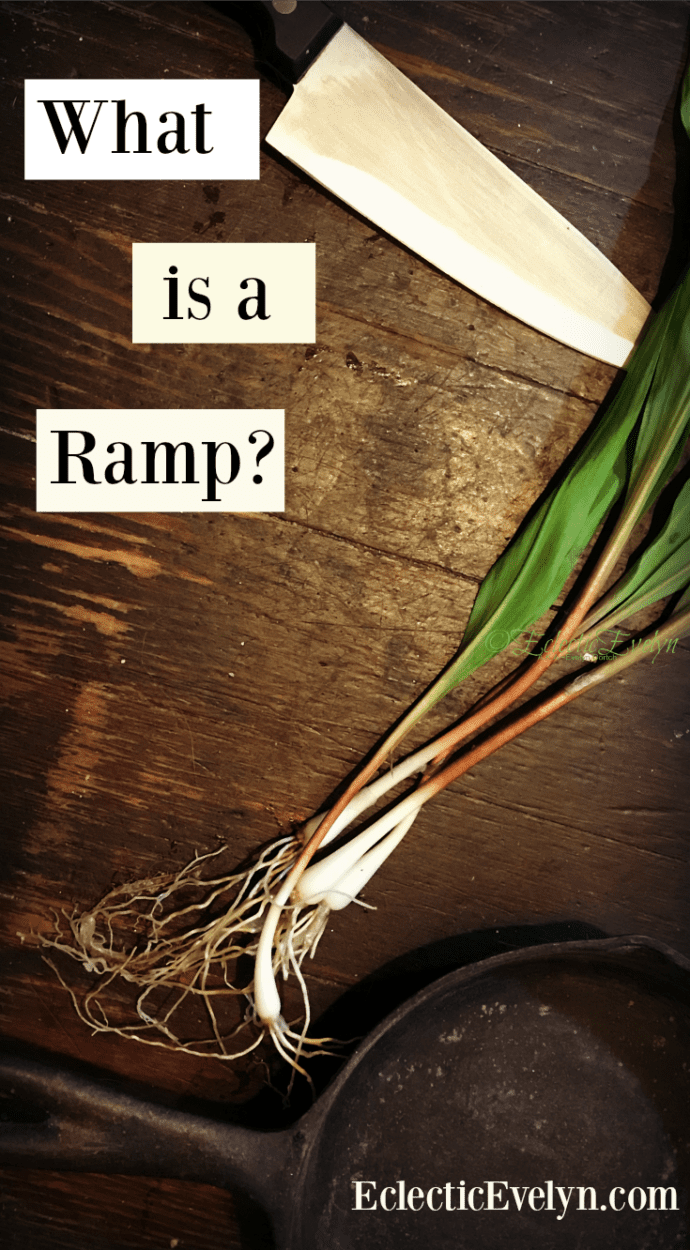
My Mamaw Flotie ( my Great-Grandmother) always called ramps her spring tonic. Each year sometime after Easter and when the daffodils were all blooming, she would say “Jake, time for a dose of my spring tonic” and my Papaw would show up later in the day with a mess of ramps he had been digging. My Papaw was always digging something up in the mountains – ginseng, ramps, mushrooms, and all kinds of medicinal roots.
The next morning Nanny (my Grandmother), my Mamaw Flotie’s oldest daughter, would wake me up opening the bedroom window. I would then smell the aromas of breakfast. Spring tonic was ready, all the aunts were there, and all the windows in the house were open to “blow the stink out”.
After breakfast, the men already gone to work, all the kids were sent out to play for the day and spring cleaning would commence. We would spend the day roaming the woods and playing in the creek or swimming in the river just being kids exploring, catching green snakes and crawdads, building forts and running in and out, screen door slamming, dirtying the floors while all the women were trying to clean.
So, What Exactly Are Ramps?
Mamaw always said ramps were an especially pungent wild onion, while Papaw called them wild garlic, and honestly, both are kind of right.
Ramps (Allium tricoccum) are a bulb-forming perennial with smooth, green leaves, often tinged with deep purple at the base. They grow in tight clusters beneath the forest floor, coming back each spring if harvested correctly.
Call them ramps, spring onions, wild onions, ramsons, or wild leeks, as Mamaw Flotie would say, “Hit don’t matter what ya call ’em, they’ll cure what ails ye.”
A Little Fun Fact:
The city of Chicago actually got its name from the indigenous word for ramps, shikaakwa. Early French explorers misspelled it as chicagou, and the rest is history
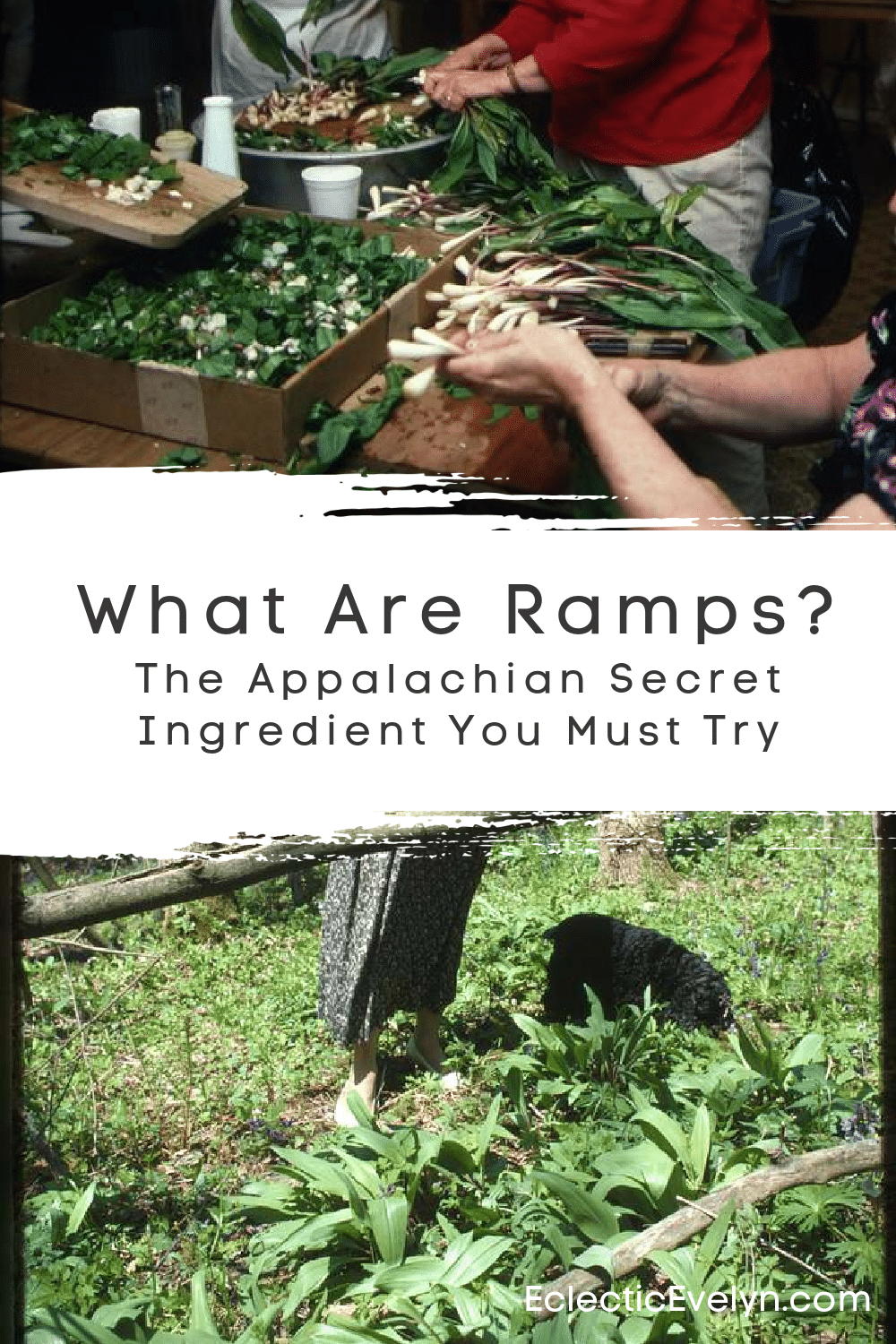
Why Are Ramps So Special?
For Appalachians, ramps are more than just a trendy spring delicacy; they are deeply rooted in tradition and a vital part of our culture. Our ancestors and indigenous communities valued them for their high vitamin C content and blood-cleansing properties.
- The Cherokee used ramps to treat colds and the croup.
- The Chippewa made a ramp-root decoction to induce vomiting.
- The Iroquois used ramps to treat intestinal parasites.
And if you’ve ever cooked with ramps, you know their strong, pungent scent can travel far! Some people claim the smell is too much for them, but for us ramp lovers, it just makes us hungry. West Virginia even has an old law that says kids can’t go to school with ramp breath!

Famous West Virginia teacher and newspaperman Jim Comstock said “Don’t let the horror stories about ramp odor scare you off . . . .a ramp is just an onion that hasn’t been civilized or had the fear of the Lord driven into it.”
Ramp Huntin’
If you are considering hunting your own ramps please do it responsibly. Ramps might be trendy right now but for Appalachians, they are part of our culture. In many areas ramps are disappearing because people are not harvesting them correctly.
Ramps take several years to grow to an edible size, which means overharvesting can wipe out an entire patch for generations. If you’re foraging for ramps, follow sustainable practices:
✔ Only take one or two bulbs from each cluster.
✔ Leave the roots in the ground to regrow.
✔ Better yet, cut only the leaves and leave the bulbs untouched.
Want to learn more? Check out this guide on how to harvest ramps sustainably so they’re around for future generations.
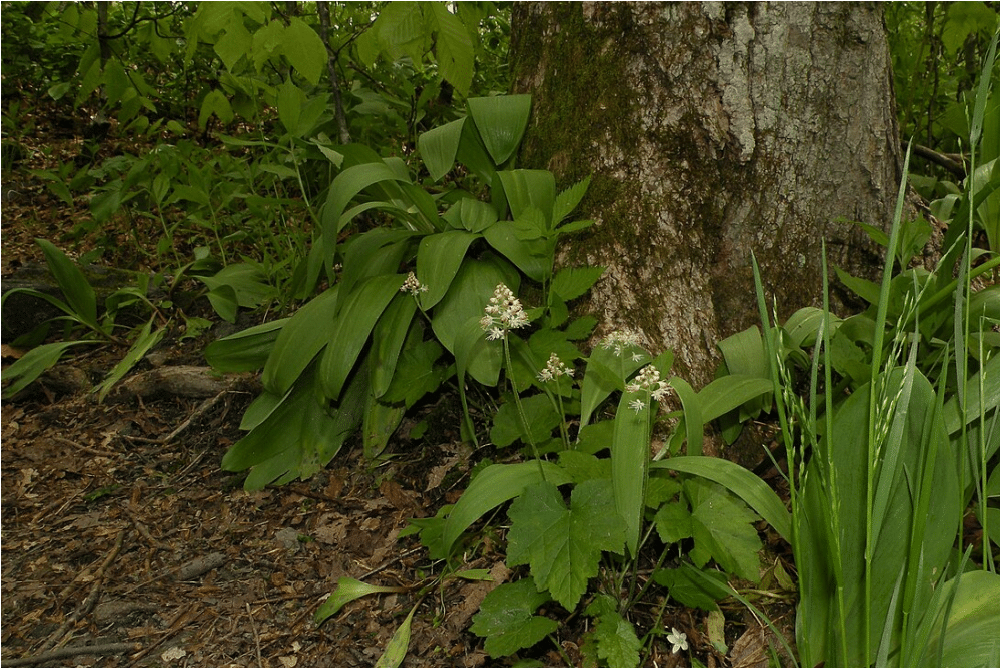
How Do You Cook Ramps?
You treat ramps like garlic or onions. Here in Appalachia, we see them more like something to cook with food and not really something to eat alone. Since chefs and hipsters in major cities have discovered the existence of ramps, they have become somewhat of a delicacy and are used in some interesting ways that we would have never thought of in Appalachia. Here we eat food that is basic and gives you the full belly you need to do a hard days work.
I am going to share my Mamaw’s recipe and a new one we tried this year that turned out really good. I cook like all the women in my family, with my eyeballs, so I am totally guessing at any measurements that are listed. We use measurements like a handful, a drop, some, couple of sprinkles, mess, a good size, enough for a grown man, not too much, etc. In the recipes passed down in my family, it is hard to find a real measurement written anywhere so bare with me and my guesstimations.
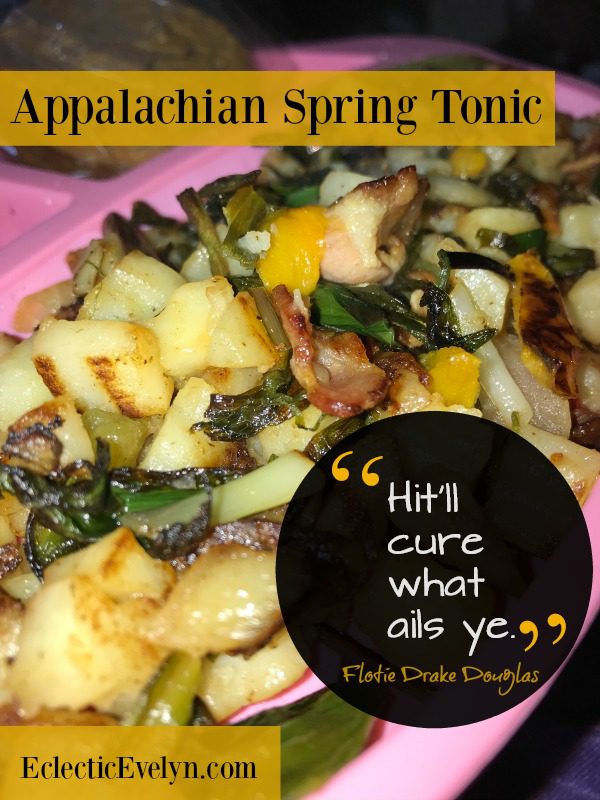
Mamaw Flotie Douglas’s Spring Tonic
This is my twist on my Great- Grandmother’s Spring Tonic Ramp Recipe
- 6 ramps, cleaned and chopped (adjust based on preference)
- 1/4 lb bacon, chopped
- 1 medium onion, diced
- 2 tbsp olive oil
- 1 bag frozen O’Brien hashbrowns
- 4 large eggs (optional)
Directions:
- Sauté the chopped onions, bacon, and ramps over medium-high heat until the bacon crisps and the onions are golden.
- Remove from the skillet and set aside.
- In the same skillet, heat olive oil, then add the frozen hashbrowns. Season with salt and pepper.
- Return the bacon-onion-ramp mixture to the skillet and cover with a lid.
- Cook on medium-low, flipping occasionally, until golden brown (about 20 minutes).
- (Optional) Crack eggs into a bowl, whisk, and pour over the hash mixture. Stir until cooked through.
I am proud to say that even though I modified her recipe for a busy and healthy lifestyle, I did still cook it in her iron skillet that she passed down to me.
Mamaw Flotie would have used 6 or 8 real potatoes that she sat on the front porch and peeled and diced with her paring knife. She would have used fresh eggs gathered that morning. She would not have used olive oil but bacon grease that she kept in a can on the stove.
Depending on how many were there for breakfast, she would have added diced ham and maybe some sausage with the bacon. This would have been served with fresh biscuits and sausage gravy, sliced fresh tomatoes, and peaches she canned last summer.
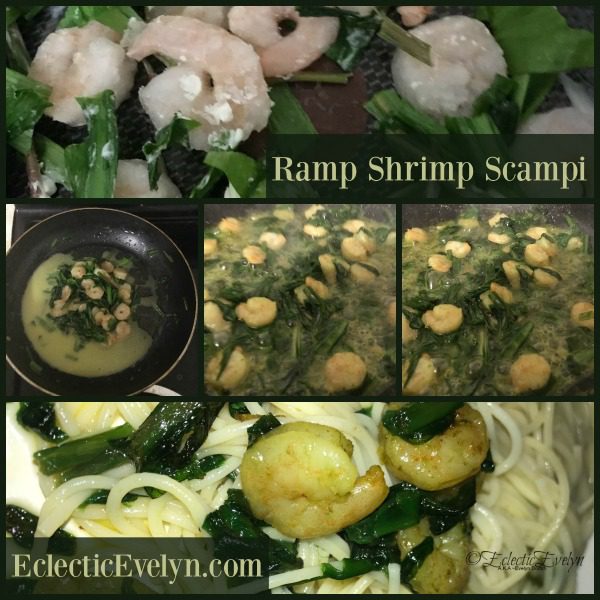
Ramp Shrimp Scampi
This is a new spin on an old classic.
Ingredients:
- 1 lb shrimp (fresh or frozen)
- 4 large ramps, chopped
- 4 cloves garlic, sliced
- 1/2 tsp Italian seasoning
- 2 tbsp butter
- 2 tbsp olive oil
- 1/2 cup white wine (or chicken broth)
- 1 lemon
- 1 small package angel hair pasta (cooked)
Directions:
- In a skillet over medium-high heat, sauté garlic in butter and olive oil until fragrant.
- Add white wine (or broth) and bring to a boil. Reduce heat and let it simmer.
- Stir in shrimp, ramps, and Italian seasoning. Cook until shrimp turns pink (about 2-3 minutes).
- Toss in cooked angel hair pasta and squeeze fresh lemon over the top.
- Serve immediately with parmesan cheese and garlic bread.
- For traditional shrimp scampi replace the ramps with parsley.
- We would serve this with a couple sliced lemons and parmesan cheese on the side, a balsamic salad, and homemade garlic bread.
- This is an easy fast weeknight recipe but it is also a nice date night meal.
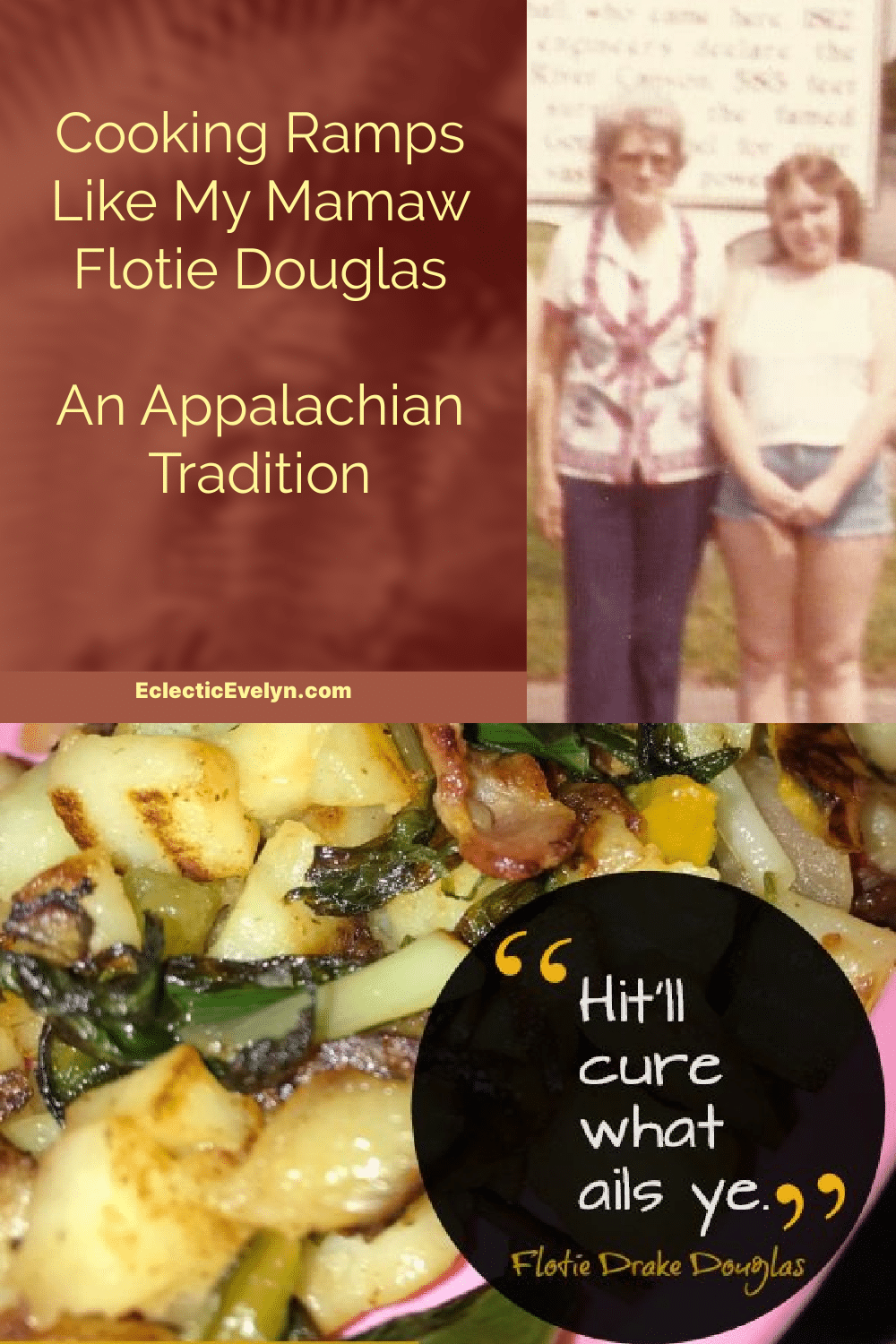
I hope you learned something about one of my favorite Appalachian foods and how we like to eat them. Let me know what you think of my recipes.
Ever heard of ramps before? Did you try out these recipes?
Leave me a comment and let me know what you think.






My Momaw always had a can of bacon grease on her stove. I miss the mountains and it always feels like a a big warm hug when I go back. Thank you for a little trip down memory lane.
You’re welcome for the trip down memory lane. I too think the mountains feel like a hug. I feel very secure in the mountains like the earth is cradling me.
This is fascinating!
I doubt if ramps survive the winter kill up here in Maine, but the equivalent delicacy in these parts is the fiddle head. And I’ve read stories about settlers in this area longing for the first sign of dandelion greens because their gums were bleeding and they had been living on half spoiled bear meat for most of the late winter-early spring days.
That generation had it all over on us softies!
Dandelion greens are a thing around here too but I’ve never had fiddle head. What is it?
I can remember my grandma pulling and cooking ramps too. How about poke? Did your family eat poke? My grandma’s “spring tonic” was stronger than ramps, though, and was made in secret down in the hollow, away from the eyes of the ATF men!
Yes, we ate poke salad as my Mamaw called it. My Mamaw never touched the strong stuff but I’m sure it wasn’t just digging that was happening up on that mountain when my Papaw went up there. 🙂
Some useful Recipe ideas in the post. Thanks for sharing them.
So fun! I had heard of them, but didn’t know how to use them. Loved the story and the law in VW! Thanks for sharing with SYC.
hugs,
Jann
I wish there was someone around here that could show me what to look for. I’d love to try these! Thanks for sharing at the What’s for Dinner party – and Happy Mother’s Day!
I have heard of ramps, but not sure that I’ve ever seen any, though my husband recently claims he found some growing on our property. 🙂
I’ve never heard of ramps before – learned something new! Not sure if they grow in Texas?? Thanks for sharing at The Blogger’s Pit Stop! Roseann from This Autoimmune Life
This is totally new to me. Never heard of these things called ramps. Love learning new things. Found you on Blogger’s Pit Stop.
What a great story and recipe! We call them wild onions around here and they do seem to have a wonderful healing power! They used to grow wild at our old house. I wish they still grew in our yard! I’d love to cook with them!